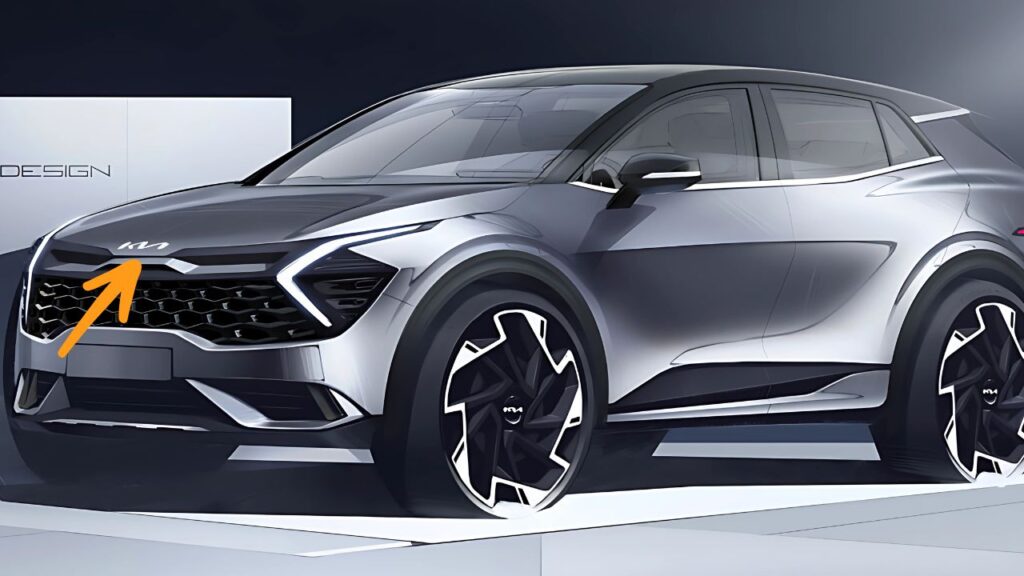
Australian automotive enthusiasts eagerly watching the global rollout of plug-in hybrid vehicles have been left wanting when it comes to the Kia Sportage PHEV. While the Korean manufacturer has successfully launched its electrified medium SUV in markets like the United States and South Korea, Australian buyers continue to wait for an official announcement regarding local availability. The absence of this compelling plug-in hybrid option represents both a missed opportunity and a complex business challenge that highlights the unique dynamics of the Australian automotive market.
The Global Success Story
The 2025 Kia Sportage Plug-in Hybrid has garnered significant acclaim in international markets, featuring a sophisticated powertrain that combines a 1.6-liter turbocharged four-cylinder engine with an electric motor to deliver 261 horsepower and 258 lb-ft of torque. With an all-electric range of 34 miles (approximately 55 kilometers) and EPA-estimated fuel economy of 35 MPG combined, the vehicle represents a compelling proposition for environmentally conscious consumers seeking practical electrification.
The vehicle has been recognized as a Kelley Blue Book Best Buy Award winner for its class multiple years running, praised for its quiet, high-quality cabin, smooth ride quality, and comprehensive warranty coverage. This recognition underscores the technical competence and market appeal of Kia’s plug-in hybrid technology, making its absence from the Australian market all the more noticeable.
In the United States, the Sportage PHEV is available in X-Line and X-Line Prestige trim levels, with pricing starting around $41,285, representing a premium of approximately $2,000-3,000 over the standard hybrid variant. The vehicle offers standard all-wheel drive, advanced safety features, and the ability to operate as a pure electric vehicle for most daily commuting scenarios.
What Australians Actually Get
While the plug-in hybrid remains elusive, Kia Australia did finally introduce the Sportage Hybrid (HEV) in early 2024, after years of customer requests and market pressure. The Sportage HEV is available in SX and GT-Line grades with front-wheel drive only, despite all-wheel drive options being available overseas. Supply has been deliberately limited to 300 units per month, representing about 20 percent of the nameplate’s monthly volume in Australia.
The 2026 model year has seen expanded hybrid availability, with both SX and GT-Line now offering front-wheel drive and all-wheel drive configurations, taking the total hybrid options to four variants. However, the plug-in hybrid technology that would allow for pure electric driving and significantly enhanced fuel efficiency remains absent from the local lineup.
The standard hybrid system utilizes a 1.6-liter turbo petrol hybrid engine with a 6-speed automatic transmission, delivering impressive fuel efficiency while maintaining the performance characteristics expected from the Sportage nameplate. While certainly an improvement over traditional internal combustion engines, it lacks the electric-only capability and enhanced efficiency that plug-in hybrid technology provides.
The Business Case Challenge
The absence of the Sportage PHEV from Australian showrooms isn’t due to lack of interest or demand, but rather stems from complex business case considerations that have proven challenging for Kia Australia to resolve. Roland Rivero, Kia’s General Manager of Product Planning, has been candid about these challenges, acknowledging that the vehicle would need to stack up competitively against established players like the Toyota RAV4 Hybrid.
Significant development costs would be required to bring the Sportage PHEV to Australia, including production of a right-hand drive variant, adding additional infrastructure to the current Gwangju plant, and ensuring compliance with Australian market regulations. These costs must be weighed against projected sales volumes and profit margins in what remains a relatively small market compared to major regions like North America and Europe.
The pricing challenge is particularly acute. Based on the Sorento PHEV’s pricing structure, which commands a $15,260 premium over the diesel GT-Line variant, a Sportage PHEV could potentially start from around $67,630 plus on-road costs. This pricing would place it significantly above the popular Toyota RAV4 Hybrid, potentially limiting market appeal and sales volume.
Competitive Landscape and Market Dynamics
The Australian medium SUV hybrid segment has been dominated by the Toyota RAV4 Hybrid, which accounts for over 80 percent of all RAV4 sales and represents Australia’s favorite SUV overall. This dominance has created a challenging competitive environment for new entrants, particularly those requiring significant price premiums to justify advanced technology.
Recent developments in the Australian market have intensified competition. Toyota has announced a new RAV4 featuring more angular bodywork, modernized interior, and a choice of hybrid powertrains including a PHEV variant capable of 100 kilometers on battery power alone. This development could further complicate the business case for the Kia Sportage PHEV, as Toyota’s established hybrid reputation and dealer network provide significant competitive advantages.
Other manufacturers have also recognized the opportunity. The segment has expanded to include options like the GWM Haval H6 Hybrid, Honda CR-V and ZR-V e:HEVs, and premium plug-in hybrids such as the Mitsubishi Outlander PHEV and Cupra Formentor. However, none have achieved the sales success of the RAV4 Hybrid, suggesting that market acceptance of premium hybrid pricing remains challenging.
Regulatory Pressures and Future Prospects
The introduction of Australia’s New Vehicle Efficiency Standard (NVES), which officially began in January 2025 and will be enforced from July 2025, may create new incentives for manufacturers to introduce more efficient vehicles. Under these standards, passenger vehicles must emit no more than 141g/km of CO2, with light commercial vehicles and heavy SUVs limited to 210g/km or less.
These regulatory requirements could strengthen the business case for plug-in hybrid vehicles like the Sportage PHEV, as they offer significantly lower emissions compared to traditional internal combustion engines. Given that 73 percent of Australian commuters travel less than 20 kilometers to work each day, most people could complete their daily commute on pure electric power using a plug-in hybrid.
The regulatory environment may also influence consumer preferences, as buyers become more aware of emissions standards and potentially face financial incentives or penalties based on vehicle efficiency. This shift could create a more favorable market environment for advanced hybrid technologies.
Technical Advantages and Consumer Benefits
The absent Sportage PHEV would offer several compelling advantages over the current hybrid variant. The plug-in system provides 34 miles of all-electric range, enabling zero-emission driving for typical daily commutes while maintaining the flexibility of a gasoline engine for longer journeys. This dual-mode capability addresses range anxiety concerns that often deter electric vehicle adoption.
The enhanced power output of 261 horsepower versus the standard hybrid’s lower output would provide improved performance characteristics, potentially appealing to buyers seeking both efficiency and driving enjoyment. The ability to charge from standard household outlets or public charging infrastructure would also provide convenience benefits, particularly for buyers with access to home charging.
Additionally, the quiet operation and seamless transitions between electric and gasoline power that characterize modern plug-in hybrids would enhance the premium experience that buyers expect from vehicles in this price range. These refinement advantages could justify premium pricing for buyers prioritizing comfort and sophistication.
Manufacturing and Supply Chain Considerations
Current supply constraints for even the standard Sportage Hybrid, which is limited to 300 units per month, highlight the manufacturing and logistical challenges facing Kia Australia. These constraints suggest that introducing an additional variant requiring specialized components and manufacturing processes could further complicate supply chain management.

The semiconductor shortages and component supply issues that have affected the automotive industry globally continue to influence product planning decisions. Kia Australia has acknowledged that current challenges with supply and component shortages are forcing the local division to focus on fulfilling existing order banks before considering specification adjustments or new variant introductions.
Consumer Alternatives and Market Solutions
While waiting for potential Sportage PHEV availability, Australian consumers interested in plug-in hybrid medium SUVs have several alternatives. Kia Australia does offer the Niro PHEV and Sorento PHEV, providing plug-in hybrid technology in smaller and larger SUV segments respectively. However, neither directly competes with the medium SUV segment where the Sportage operates.
The Toyota RAV4 Hybrid remains the dominant choice for buyers seeking efficiency in this segment, though its lack of plug-in capability means it cannot offer the zero-emission driving experience that full PHEVs provide. The upcoming Toyota RAV4 PHEV could change this dynamic, potentially creating a more competitive environment that might encourage other manufacturers to introduce their own plug-in variants.
For buyers specifically interested in Kia products, the expanded 2026 Sportage Hybrid lineup, now offering both front-wheel drive and all-wheel drive configurations across multiple trim levels, provides improved choice within the traditional hybrid segment. While not offering plug-in capability, these variants deliver significant efficiency improvements over conventional powertrains.
Future Outlook and Industry Trends
The 2025 facelift of the Sportage, arriving in Australia in the second quarter of 2025, brings updated technology, improved refinement, and expanded hybrid availability. While this update doesn’t include the PHEV variant, it demonstrates Kia’s continued investment in the Australian market and suggests that future powertrain additions remain possible.
Industry trends toward electrification, combined with regulatory pressures and changing consumer preferences, may eventually create conditions favorable for PHEV introduction. The success or failure of competing plug-in hybrid vehicles in the Australian market will likely influence Kia’s future decision-making regarding the Sportage PHEV.
Expectations for the 2026 model year include potential additions of fuel-saving technologies and continued expansion of hybrid variants, suggesting that Kia remains committed to electrification in the Australian market, even if full plug-in capability remains elusive.
In Summary
The absence of the Kia Sportage PHEV from Australian showrooms represents a complex intersection of business considerations, market dynamics, and regulatory environments. While the technology exists and has proven successful in other markets, the unique challenges of the Australian automotive landscape have thus far prevented its introduction.
For Australian consumers, this means continued reliance on traditional hybrid technology or consideration of alternative vehicles and brands. However, the evolving regulatory environment, changing consumer preferences, and increasing competition in the electrified vehicle segment suggest that conditions may eventually align for PHEV introduction.
Until then, the phrase “for now” in discussions of Sportage PHEV availability serves as both a acknowledgment of current limitations and a hint at future possibilities. As the Australian automotive market continues its gradual shift toward electrification, the business case for advanced hybrid technologies like the Sportage PHEV may eventually reach the tipping point necessary for local introduction. Whether that occurs in the next model update cycle or requires more fundamental market changes remains an open question that will be answered by the intersection of consumer demand, regulatory pressure, and business pragmatism.
